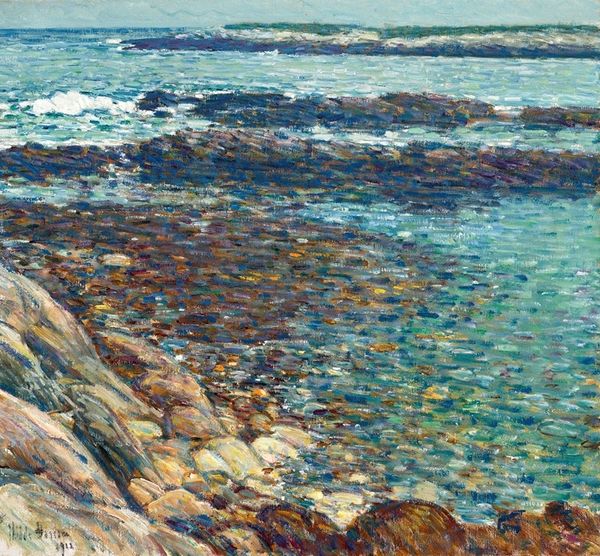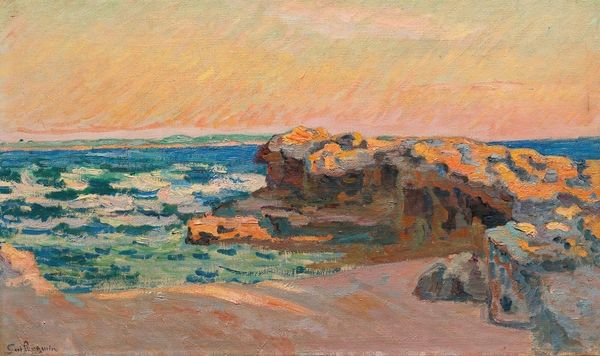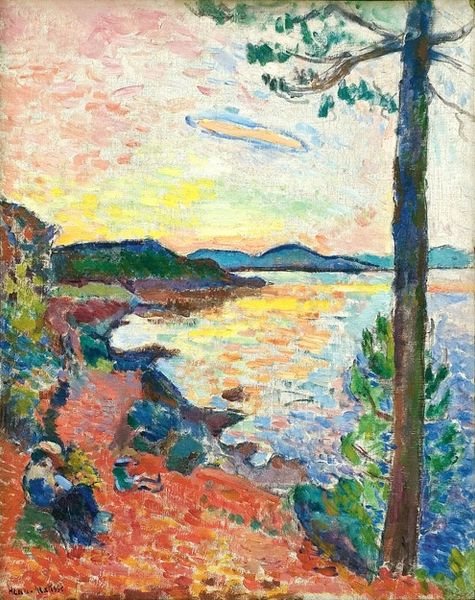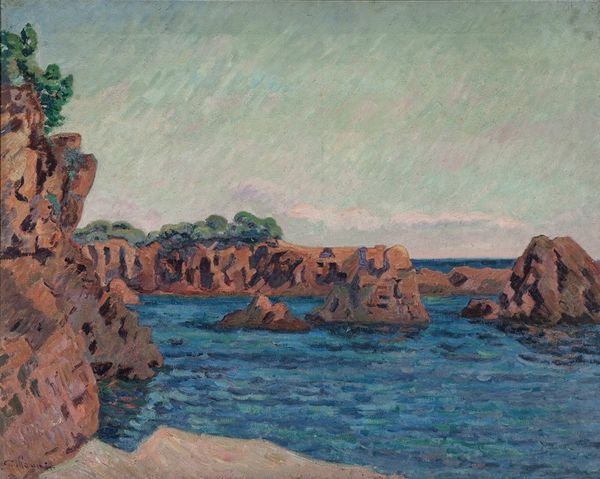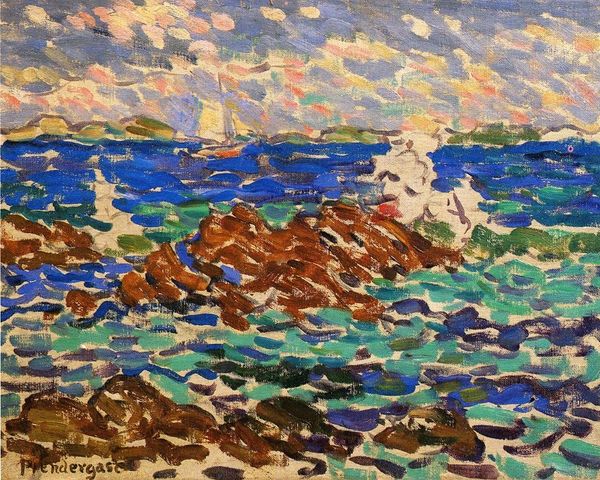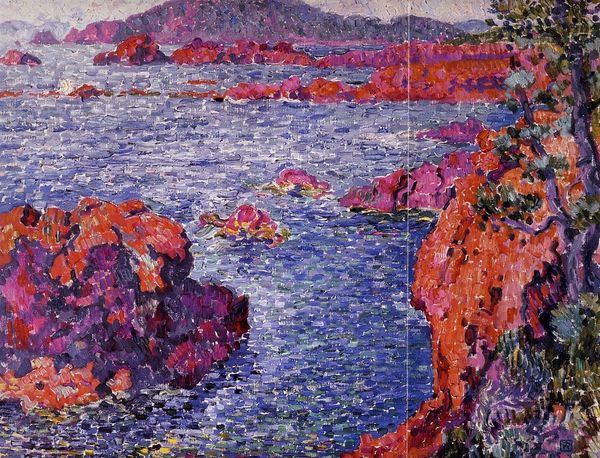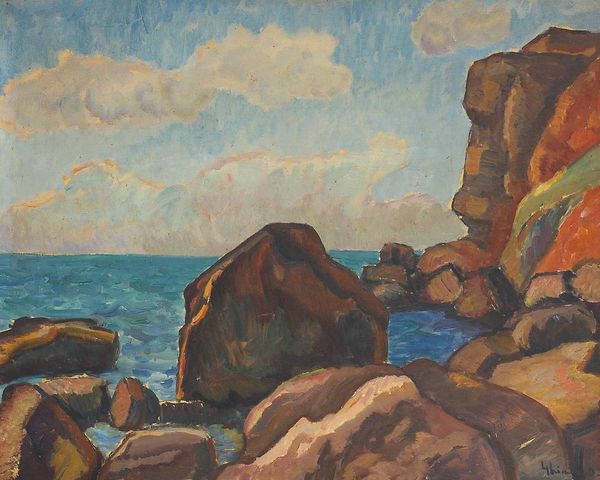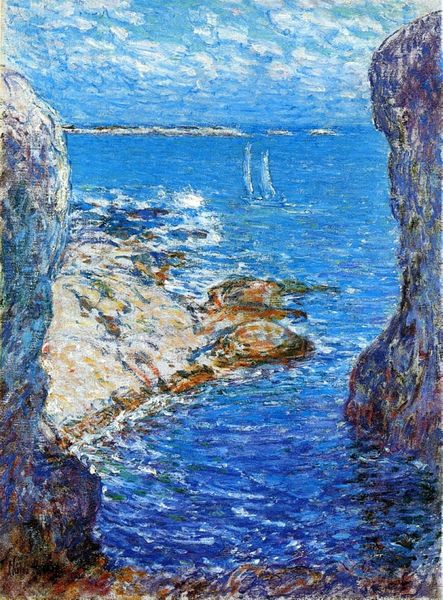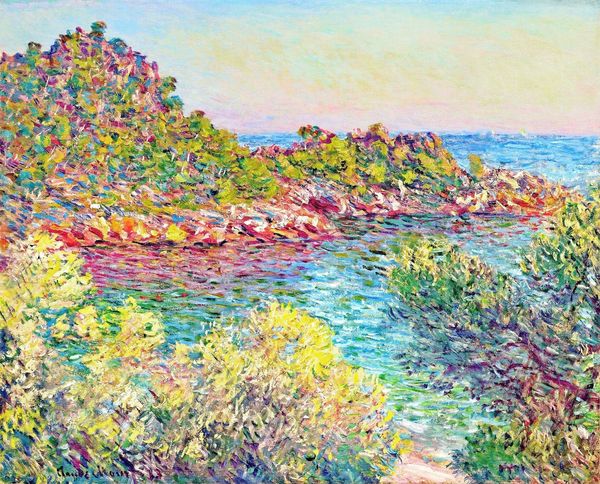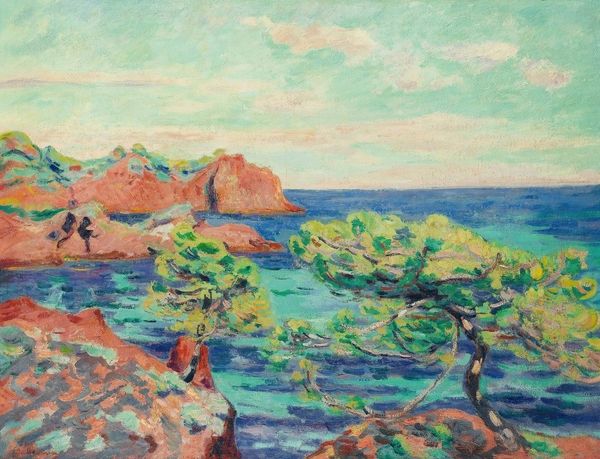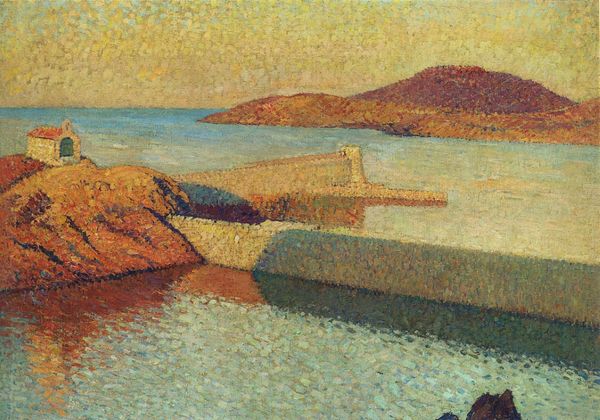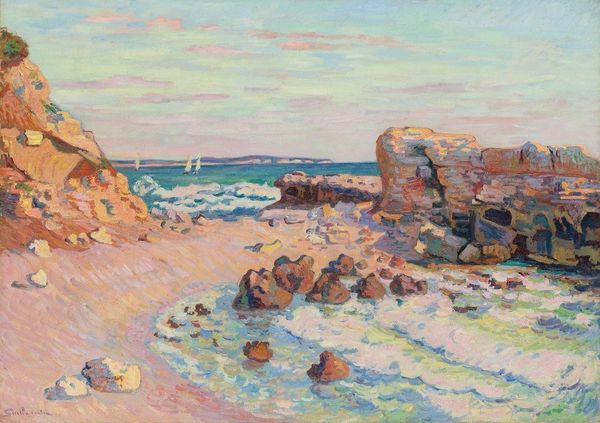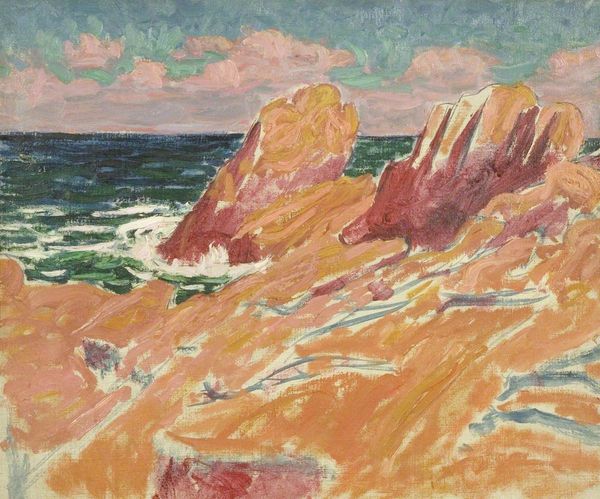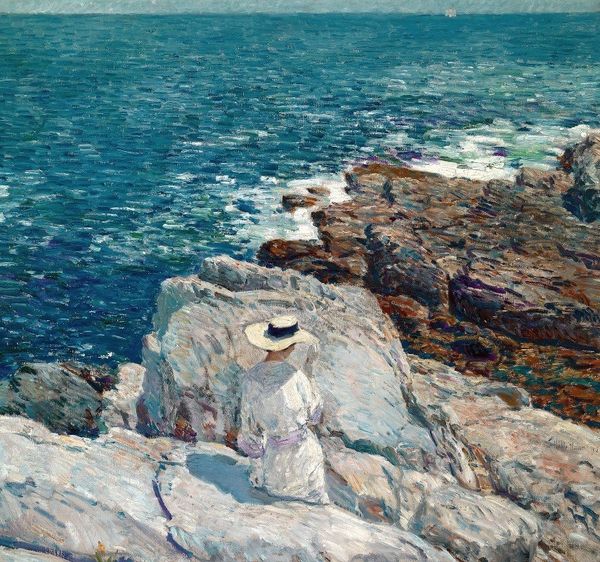
Copyright: Public Domain: Artvee
Curator: Painted between 1913 and 1914, this oil on canvas is titled "Vilsandi maastik," or "Vilsandi Landscape" by Konrad Mägi. What catches your eye? Editor: Well, immediately it’s the tension between the foreground’s heavy, textured rocks and the almost saccharine pinks of the sky. It's a disconcerting juxtaposition. Curator: Mägi was known to imbue his landscapes with deeply personal, even spiritual meaning. Vilsandi, an island, is itself a powerful symbol in Estonian culture—often seen as a place of refuge and solitude. Does the lighthouse signify anything? Editor: Perhaps. Considering the pointillist-like brushstrokes, that single light source feels pivotal. Notice how it disrupts the more muted, earthy tones in the foreground. It might be drawing a link between material reality and a guiding, higher purpose. The lighthouse beam almost touches the water in the painting, creating visual echo to show how its purpose it reflecting beyond safety for ships. Curator: And these vibrant pinks and greens – do they signify anything or set the scene, creating a nostalgic or perhaps visionary ambiance? Editor: I believe so. It is all connected within his vision. Mägi used color less to depict reality and more to convey inner emotion. In that context, these high-key colors may be visual short hand for spiritual ecstasy. What is particularly telling is the thickness of paint which creates a very material surface to signify his place of spiritual vision. Curator: I see that here as well. It does leave one reflecting about art, spirituality, and the weight that artists might carry of their spiritual beliefs within them. Editor: Agreed, I find it interesting how an island, which traditionally represents isolation, in Mägi's composition is a bridge to the divine.
Comments
No comments
Be the first to comment and join the conversation on the ultimate creative platform.
